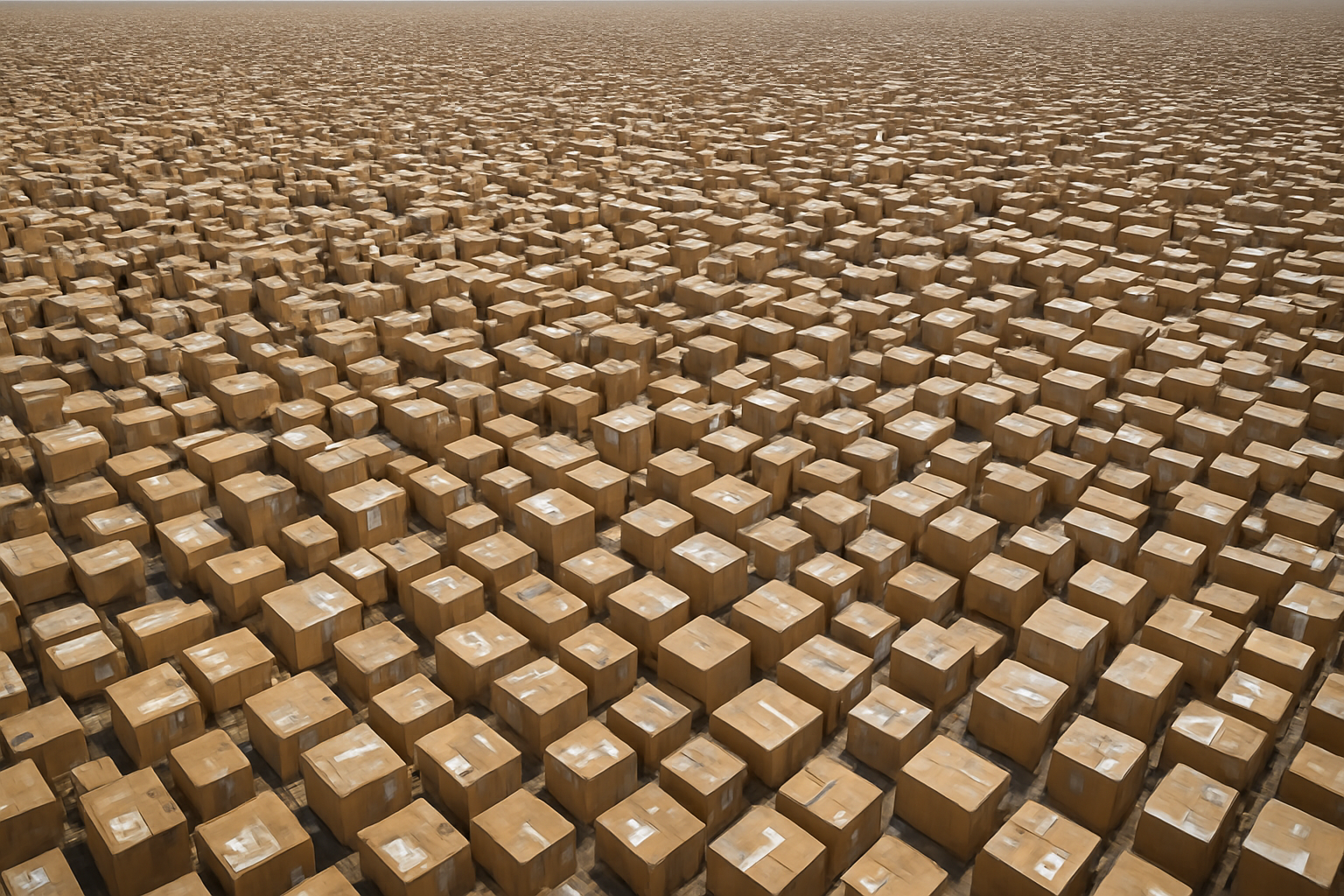You’ve optimized your store. You’ve fine-tuned your shipping strategy. Orders are going out smoothly. But what happens when they need to come back?
Every eCommerce business deals with customer returns. Some are simple: the wrong size, a changed mind. Others involve warranty claims, damaged goods, or items nearing the end of their lifecycle. Either way, those products are coming back and need somewhere to go. That’s where reverse logistics comes in.
Reverse logistics is no longer optional. As customer expectations rise, so do the stakes. You’re not just losing money if your returns process is clunky, slow, or expensive. You’re losing trust.
At ePost Global, we hear a lot of questions about reverse logistics. What does it involve? What does it cost? How do I make it work better? This post answers the most common ones, based on what we see every day in global eCommerce supply chains.
1. What Is Reverse Logistics and Why Does It Matter?
Reverse logistics is the part of your supply chain that handles what happens after the sale, specifically, the movement of goods from the customer back to you. It includes everything from processing customer returns to managing warranty repairs, refurbishing and remanufacturing used products, facilitating recycling programs, and routing end-of-life goods for responsible disposal.
If an item leaves your customer’s hands and isn’t headed straight for the trash, it’s likely part of your reverse logistics process.
Take, for example:
- A customer sends back a pair of shoes that didn’t fit. The shoes are inspected, cleaned, and restocked for resale.
- A consumer electronics brand accepts broken headphones under warranty. The product is returned, repaired, remanufactured, and resold as “like new.”
- A furniture retailer offers a pickup service for damaged or returned goods, rerouting salvageable items to local warehouses for resale at a discount.
These workflows touch every part of your operation: inventory management, transportation, customer service, sustainability, and cost.
Reverse logistics impacts your bottom line in two major ways. First, there are direct costs: handling, shipping, refurbishing, or warehousing returned products. Second, through the customer experience. A return that’s easy and transparent can build trust and retention. A slow, confusing, or expensive return can lead to lost sales and reputational damage.
When the process works, reverse logistics supports profitability and long-term customer loyalty. It introduces inefficiencies across routing, warehousing, refund timing, and resale potential when it doesn’t.
2. How Do Reverse Logistics Solutions Work?
Most reverse logistics processes follow a similar path. While there are several types of reverse logistics operations depending on the business model, here’s what that typically looks like:
- Return initiation – The customer requests a return through your website or customer service.
- Label generation – A return label is created and sent to the customer.
- Pickup or drop-off – The item is shipped back or scheduled for pickup.
- Inbound shipping – The product travels to a warehouse or returns center.
- Inspection and sorting – Items are checked for condition, warranty status, and resale potential.
- Next step routing – Based on the item’s condition, it’s restocked, refurbished, recycled, or discarded.
Automation and visibility help reduce delays and human error. You’re more likely to lose time and money if you don’t know where your returned items are or their condition.
Returns take more time to process than outgoing orders. They require coordination across multiple teams and systems. Even if returns make up a small portion of your volume, the complexity involved adds up fast. That’s why many businesses outsource some or all of their reverse logistics. It keeps teams focused on growth and helps optimize the reverse logistics process at scale.
3. What Are the Most Common Challenges in Reverse Logistics?
Returned goods often create more friction than outgoing shipments. Here’s why:
- Shipping costs for returned items can be significantly higher, especially for international returns. A $20 shirt might cost $35 to ship back overseas. Multiply that across hundreds of orders, and the losses add up fast.
- Customs documentation can be a bottleneck. A mislabeled return or incorrect HS code can delay items for weeks or result in unexpected fees.
- Lack of tracking means both customers and sellers lose visibility. When you can’t see where a returned item is, you can’t plan for resale or replacement.
- Inconsistent regulations between countries add complexity. What’s allowed as a return in one market might be restricted in another, making global reverse logistics supply chain planning a challenge.
Even businesses with generous return policies struggle when operations behind the scenes aren’t built to handle the volume or complexity. A product might be eligible for return, but if the reverse logistics process breaks down, the customer experience—and your recovery strategy—takes a hit.
Strong reverse logistics management minimizes that risk. With near real-time tracking, smarter routing, and tighter customs handling, you can reduce surprises and keep your operation moving smoothly.
4. How Much Do Reverse Logistics Solutions Cost?
There’s no one-size-fits-all price tag. Reverse logistics costs depend on the type of product, return volume, destination, and how the process is structured. What works for a high-end electronics brand will look very different from a fast fashion business.
You’re not just paying to move a product back. You’re paying for:
- Pickup coordination – scheduling, routing, and label creation
- Inspection and sorting – checking condition, functionality, and warranty status
- Repackaging – especially important for items headed to resale
- Restocking or refurbishing – getting products back to a saleable or usable state
- Warehousing – storing returned items until the next step is determined
Each of these steps adds labor, time, and handling costs. The total cost of processing a return can often exceed the original item value. That’s why lifecycle planning matters. Businesses must evaluate which items should be resold, which can be reused or donated, and which should be retired early.
Reverse logistics isn’t just a line item—it’s part of your profitability strategy. Making smarter decisions about returned items helps reduce waste and protect margins.
Want a deeper look at costs? Our blog on The True Cost of Returns covers it.
5. How Do I Know If I Need a Reverse Logistics Solution?
Not every business needs a fully built-out reverse logistics system, but many wait too long to put one in place. If any of the questions below sound familiar, it may be time to evaluate your current setup:
- Are returns increasing faster than your team can keep up with?
- Are customers frustrated with how long it takes to process a return or issue a refund?
- Are returned items sitting in storage because your team doesn’t know what to do with them?
- Are you spending more than you expected on restocking, refurbishing, or return shipping?
- Are your customer service reps fielding the same return-related questions over and over?
- Do you lack visibility into where returned goods are in the process, or what they cost to handle?
- Do returns from international markets take longer or cost more than you can justify?
- Are usable products getting discarded because the return system can’t support reuse or resale?
If you answered yes to even a few of these, a more structured reverse logistics solution could free up time, reduce costs, and protect your margins. It doesn’t have to be complicated—but it does have to be intentional.
6. Can Reverse Logistics Be a Competitive Advantage?
Yes—if it’s done well.
Returns are often viewed as a cost center. However, a well-run reverse logistics process can become a strategic asset. It gives customers confidence, which encourages them to buy. When customers know they can return something easily, they’re more likely to complete a purchase and return next time.
Speed and clarity matter. A return that’s processed quickly, with clear communication at every step, creates trust. That trust turns into loyalty and drives long-term customer satisfaction, especially when the refund or exchange process feels effortless.
Reverse logistics also opens up opportunities for resale, refurbishing, or donation. Instead of absorbing the full cost of a returned product, you recover some of its value. In tight-margin industries, that flexibility makes a difference.
7. How Can I Reduce My Return Rate Without Hurting Sales?
Start by giving customers the right information before they buy. That means better product photos, clear sizing guides, honest customer reviews, and transparent return policies. Customers who know what to expect are less likely to send it back.
After the sale, follow up. Ask for feedback. Identify patterns in returned items. Are the same products getting sent back over and over? That could point to a flaw in the product description—or the product itself. It could also highlight an issue with packaging, sizing charts, or fulfillment accuracy.
Use return data like you would sales data. It’s full of insight. Which products are returned the most? Which regions or customer groups initiate the most returns? The answers can help you improve how and what you sell.
Reducing return rates isn’t about being strict. It’s about being proactive. Prevent avoidable returns and build a reverse logistics system that handles unavoidable returns efficiently.
For more ideas, check out our post on Reducing Returns Without Cutting Revenue.
8. How Do I Choose the Right Reverse Logistics Partner?
There’s no shortage of logistics providers, but not all of them are equipped to handle returns management, and the stakes are high. The right partner can save you money and keep your customers happy. The wrong one can slow you down, increase costs, and leave you with a mess of returned inventory and unhappy buyers.
Ask yourself:
- Do they support international and domestic returns?
- Do they offer end-to-end service capabilities—from pickup to resale or disposal?
- Do they offer tracking and automation tools?
- How do they integrate with your existing systems?
- What kind of products and industries do they typically work with?
- Can they support multiple return channels—home pickup, lockers, in-store drop-offs?
- Do they help you track costs, routing, and inventory across your entire reverse logistics process?
Reverse logistics management is more than moving boxes. Its supply chain strategy, customer retention, and margin protection—all rolled into one.
Your reverse logistics partner should help you reduce costs, improve turnaround time, and strengthen your customer experience. They should also be flexible enough to adjust as your return volume or business model evolves.
Reverse Logistics Isn’t a Back-End Problem. It’s a Frontline Opportunity.
Returns are part of the customer journey. If you’re not thinking about how your reverse logistics strategy supports supply chain efficiency, customer loyalty, and long-term profitability, you’re leaving opportunity on the table.
ePost Global helps businesses take control of their returns. If you’re ready to reduce inefficiencies, protect your margins, and streamline your supply chain, let’s talk.
Contact us to learn more about effective reverse logistics services built for modern eCommerce.




